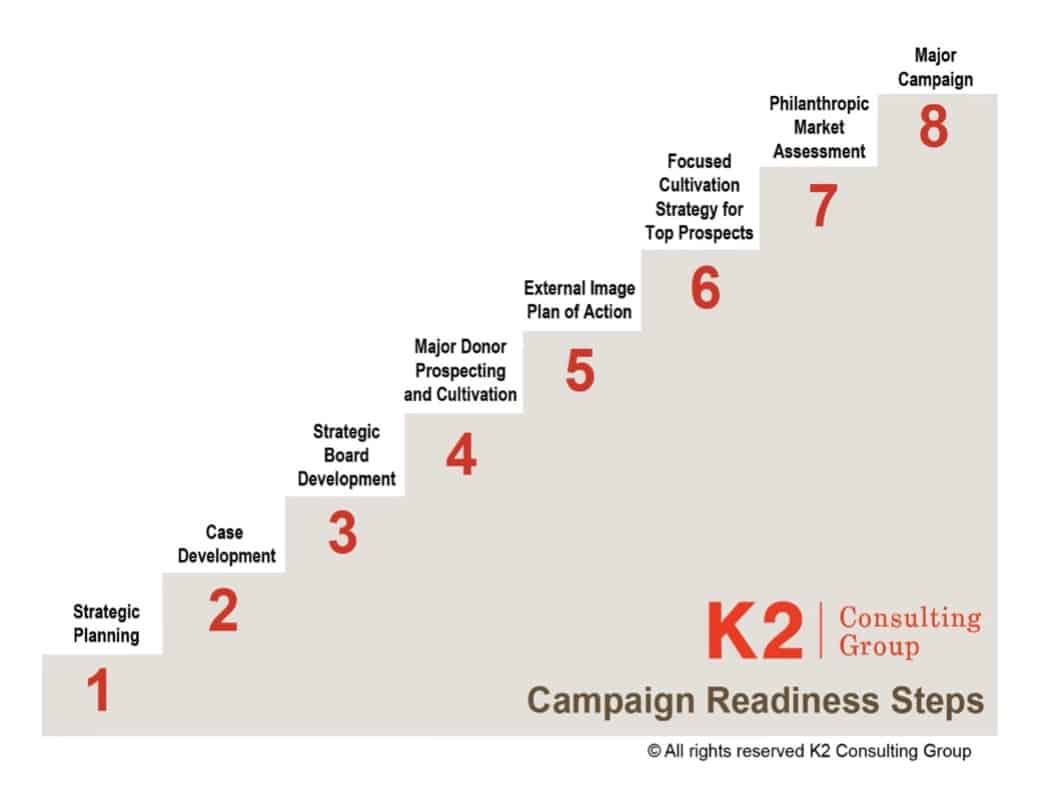As a firm, we’ve experienced all levels of readiness when organizations reach out about a campaign feasibility study. By successfully preparing for a study, it could mean the difference between a green light to proceed with a campaign, a blinking yellow caution light and a full-on flashing red stop sign.
How can organizations ensure that their campaigns will be a success and that you are ready to proceed with a study?
First, what a feasibility study is and what it’s not:
A feasibility study’s true purpose is not just discovering how much money a campaign can likely produce, it lays out a tailored plan on how to achieve the goal. We call it a “philanthropic market study”, as the term “feasibility” underrepresents the real benefit and outcome of a study.
If a campaign is not fully supported by sufficient donors, a solid study lays out a recommended plan toward future success if the project is supported by enough foundational core supporters. A campaign may not be feasible at a snapshot in time, but it doesn’t mean it cannot be successful by taking some important preparatory steps.
What does a philanthropic market study test?
Breaking it down to the four necessary ingredients for a successful campaign, a study examines the:
- Case for support (For what exactly are you seeking funding and how does it benefit the donor/investor?)
- Volunteer Leadership (Who are the respected volunteer leaders and donors behind the campaign? Are they in a position to and willing to provide leadership and influence in attracting the support of others?)
- Potential for support (Does the potential exist for the pacesetting and other major gifts in sufficient quantity to meet the campaign’s funding requirements?)
- Internal Preparedness and Capacity (Are the right professional staff on board who are dedicated to the campaign with the support systems in place to meet the campaign’s requirements?)
K2 Consulting Group defines pre-campaign readiness through these sequential, overlapping steps:

Before contracting a consultant to conduct a study, take the time to make sure your organization has accomplished the following:
- A strategic plan that confirms the capital project is necessary to fulfilling the organization’s mission.
- A market analysis ensuring the viability of the project. i.e. if we build will they come?
- Board members are 100% behind the plan and willing to provide leadership and support.
- Meetings with key donors to share the plan. This will give you the confidence that you have enough qualified donors for inclusion in the study interviews.
TIP: Don’t let this happen to you: The consultant’s interview is the first time the donor prospect is hearing about your plan and a proposed campaign.
- After meeting with donors, you have a top prospect list for inclusion in a philanthropic market study and an idea of the volunteers who may lead the campaign.
- The case for support describes the project to be funded and persuasively articulates the benefits to potential donors/investors.
- You have allocated staff and invested in systems to manage a campaign.
Thirty percent of pre-campaign studies result in an insufficient donor response.
Avoid spending precious resources and time until you have taken the steps to fully prepare. By doing so, you will move into the study with the confidence that your goals will be met and the dollars will be well spent.








Leave A Comment